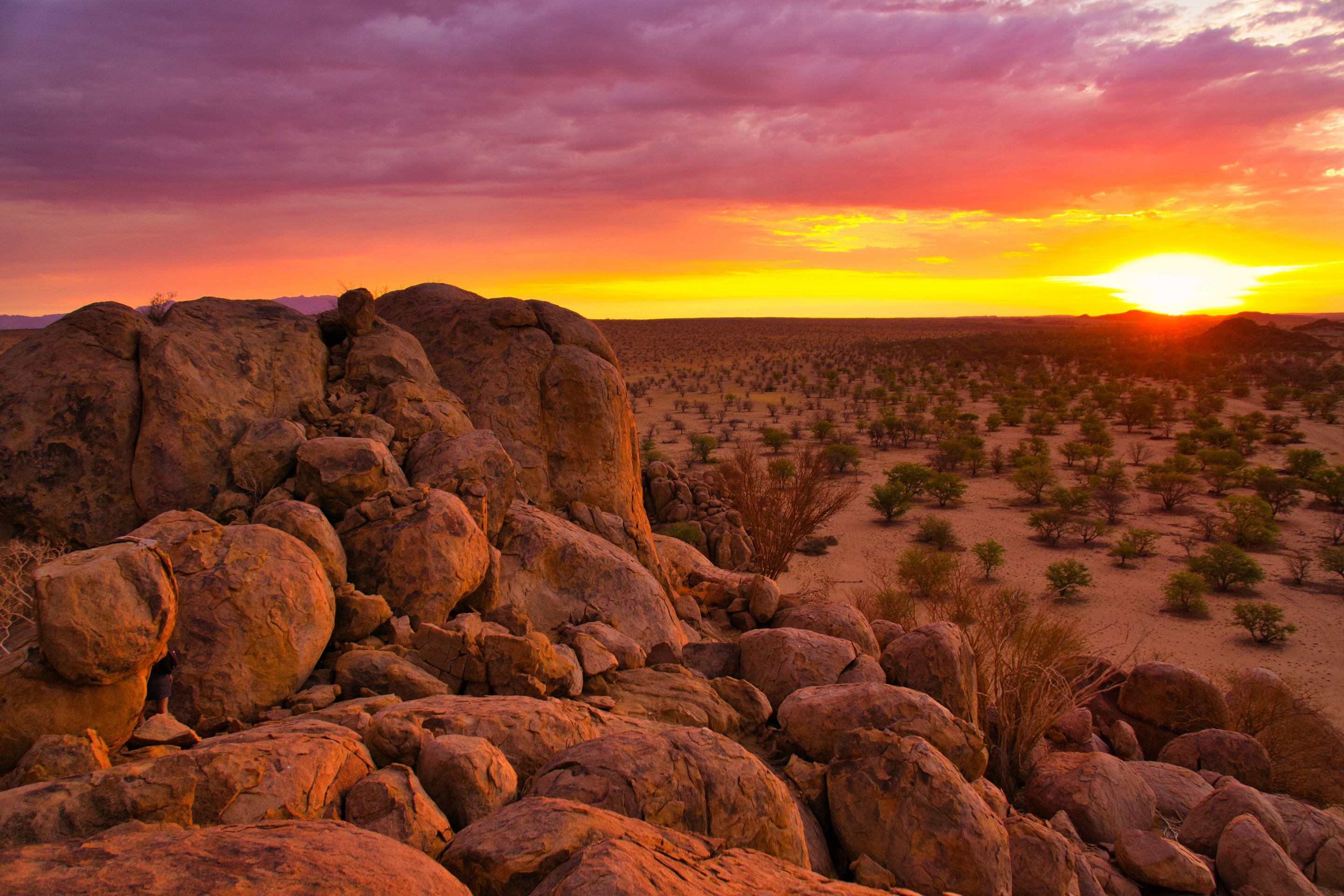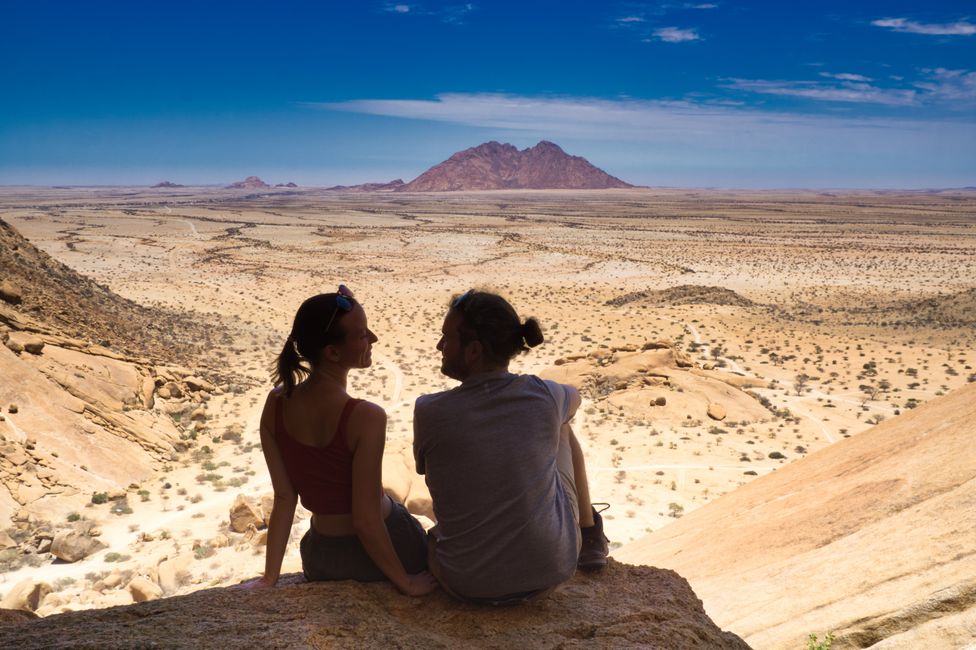Fish River Canyon & Orange River
Publicat: 26.12.2021
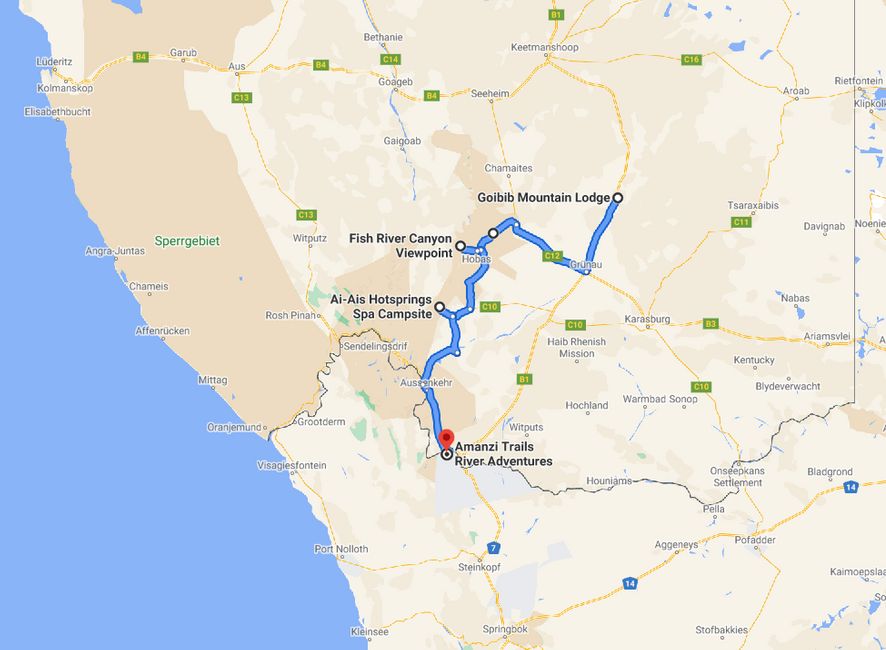
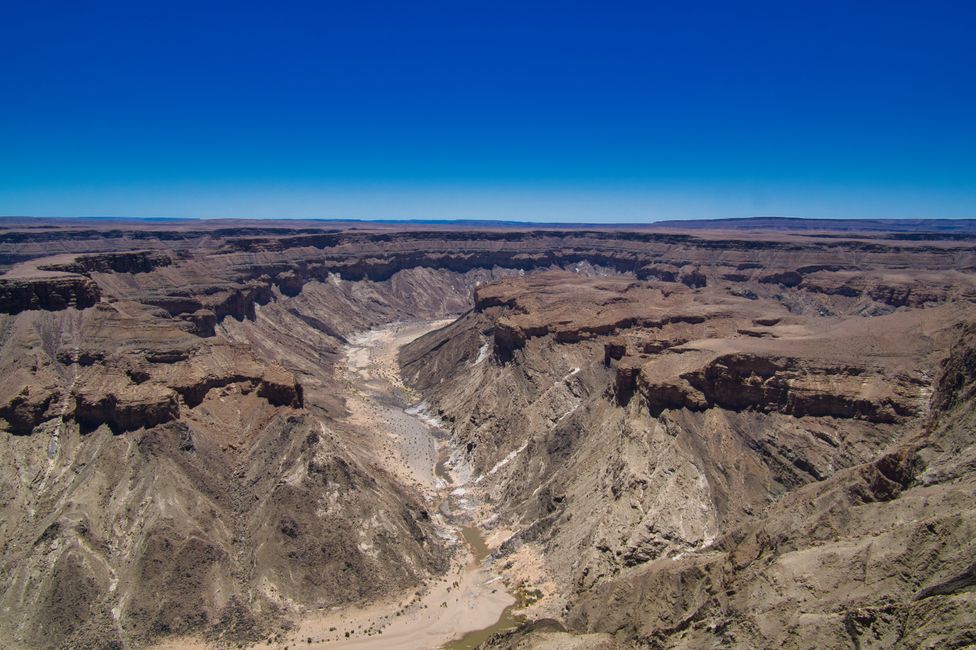
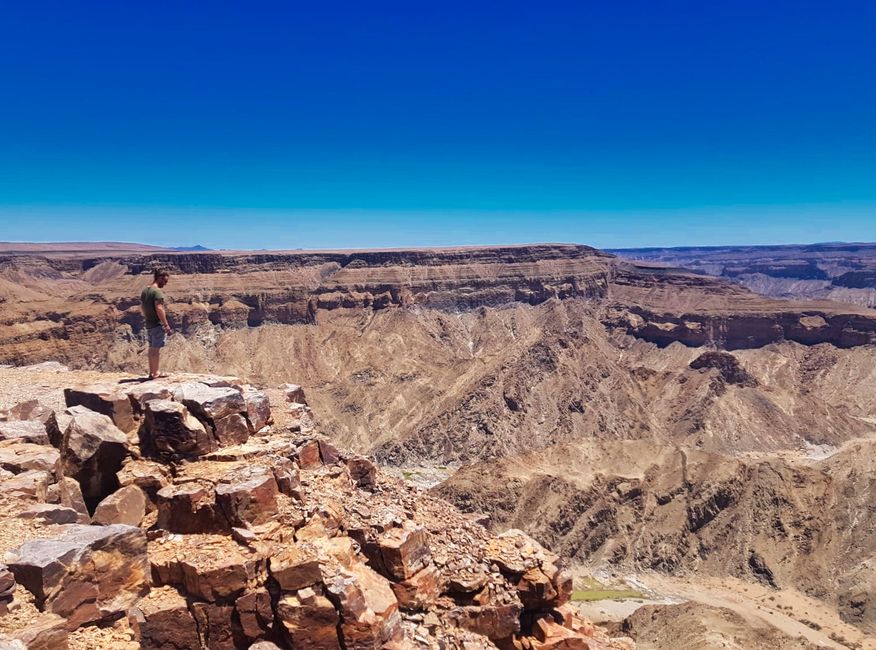
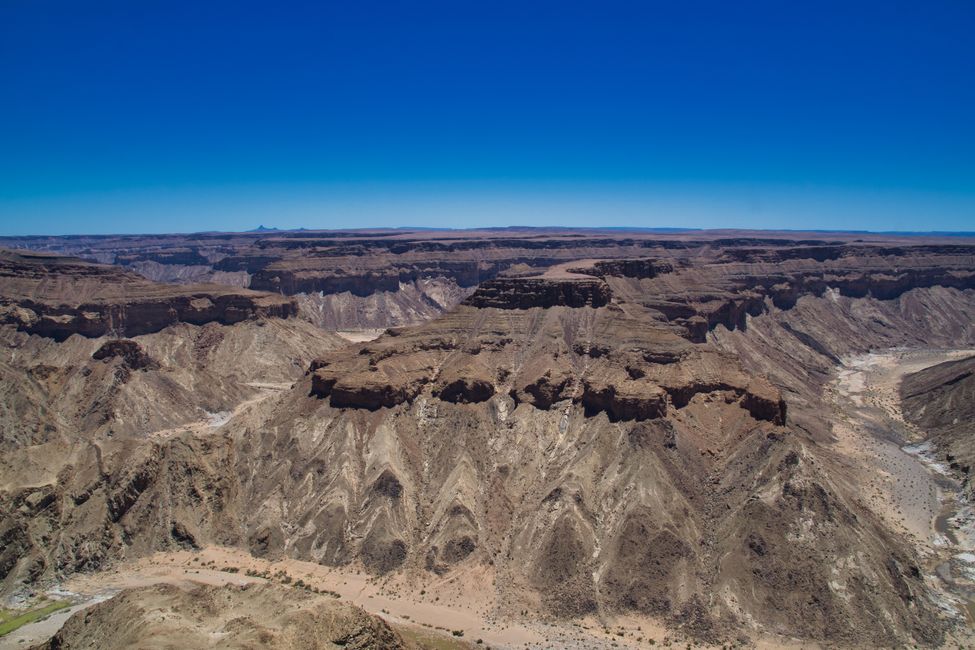
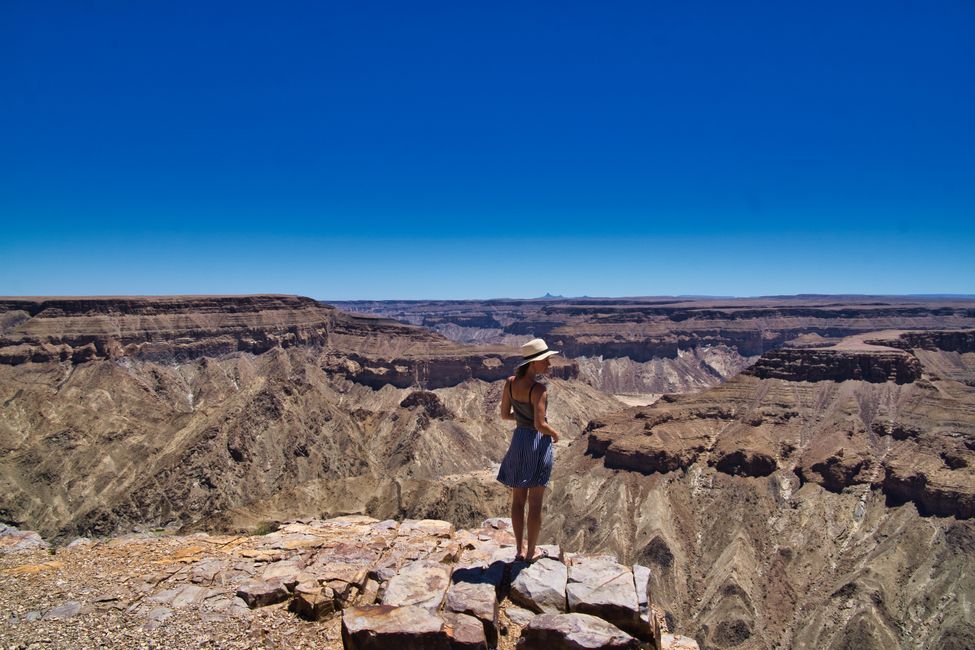
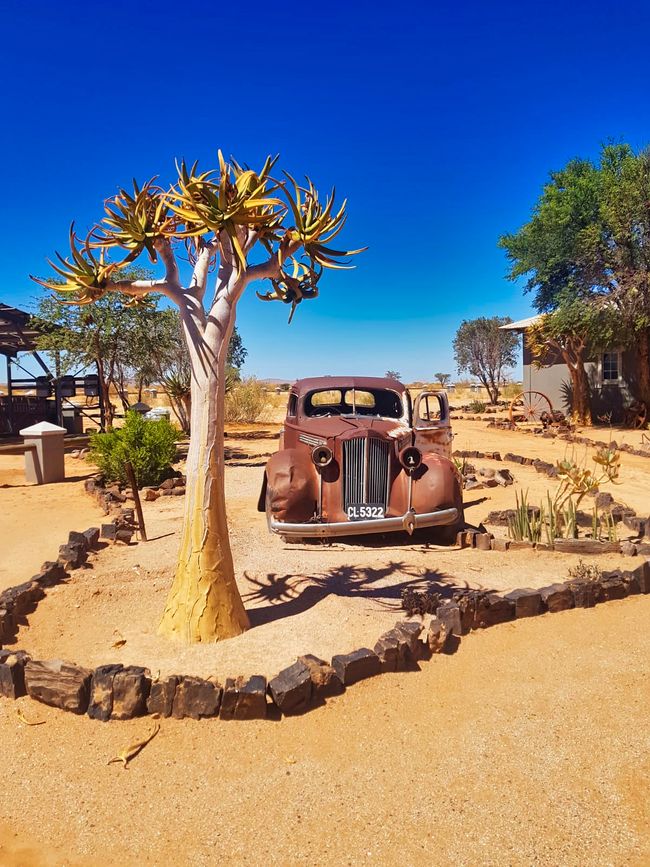
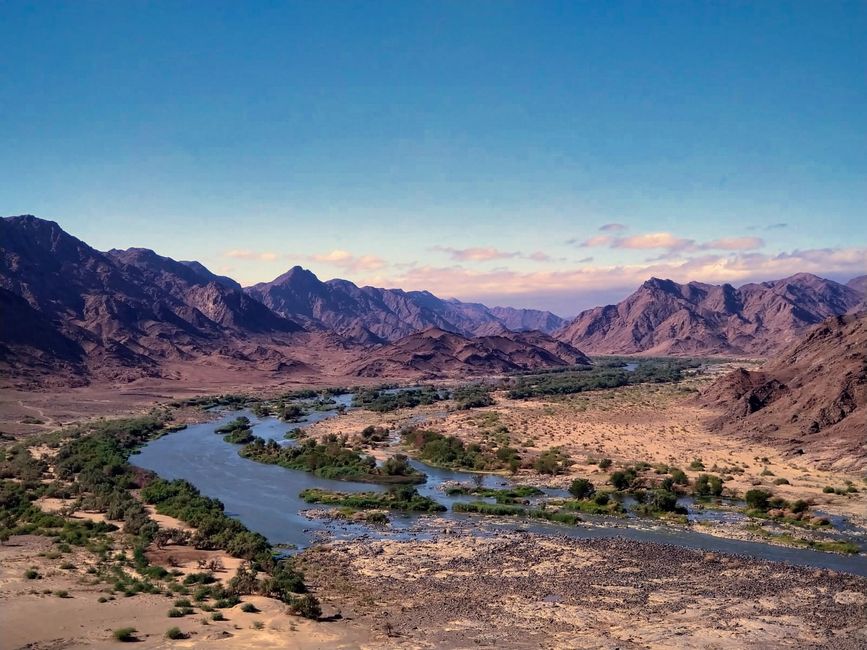
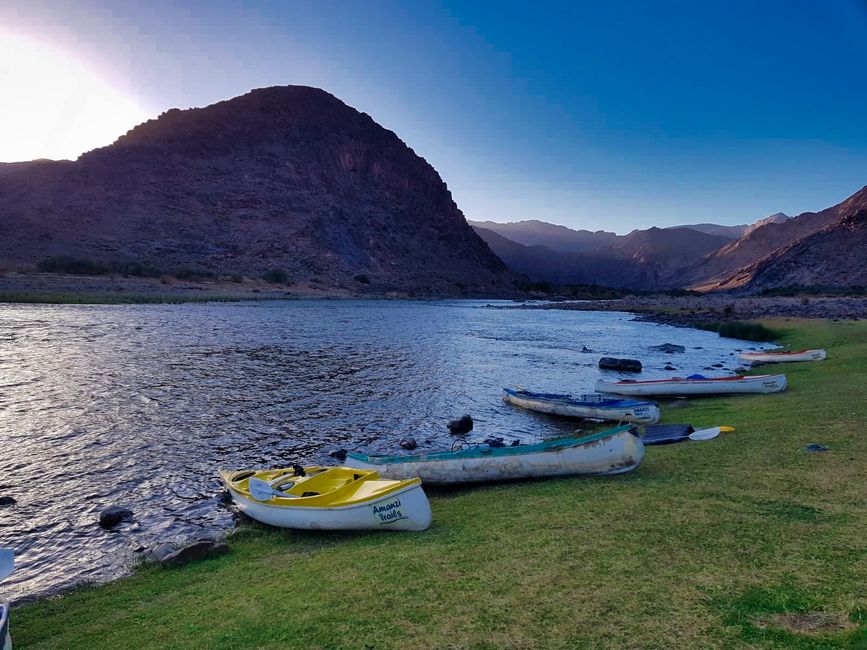
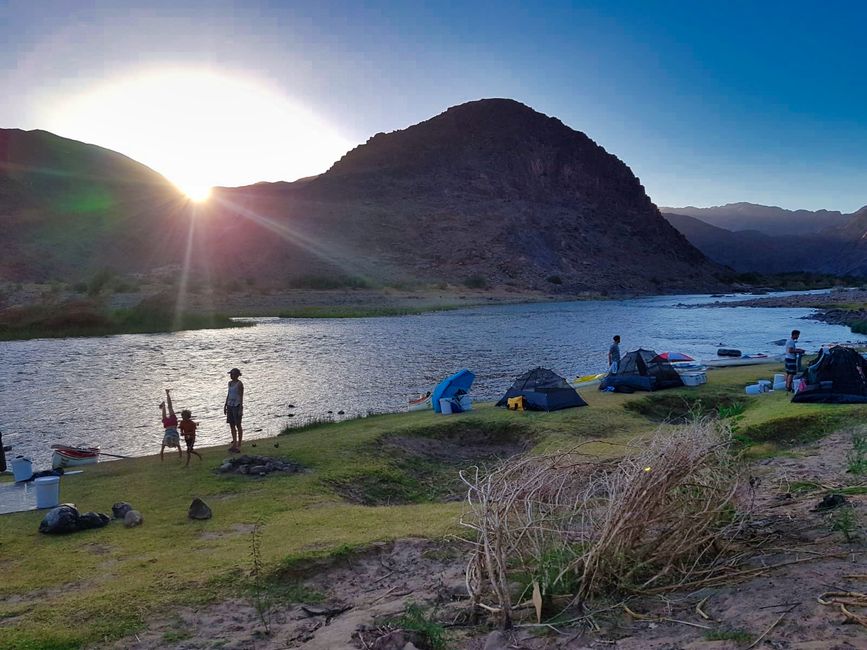
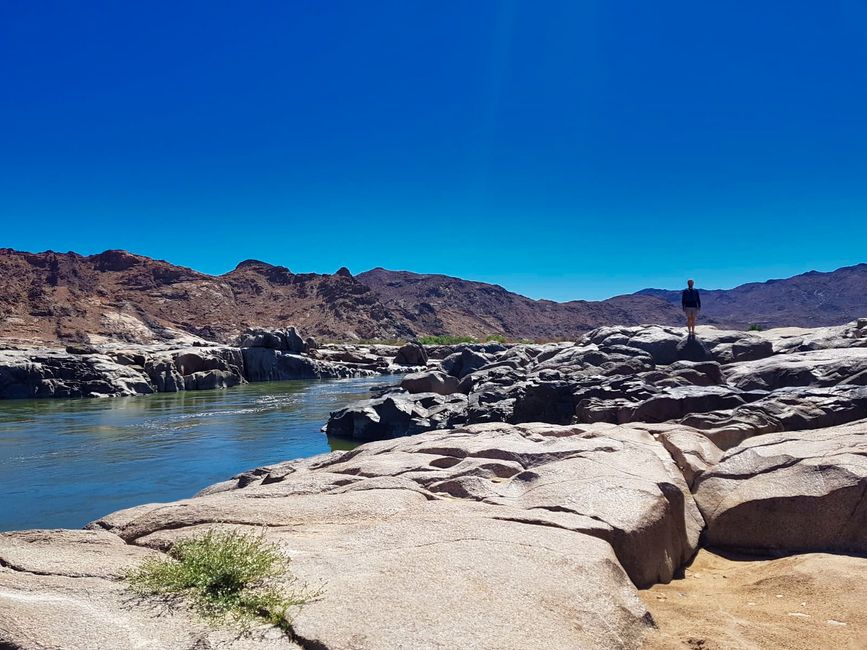
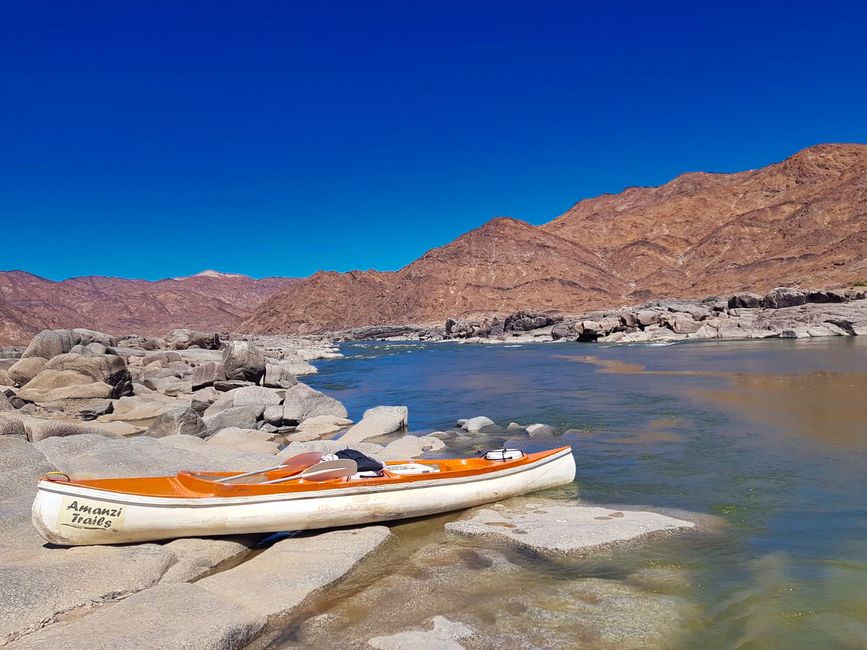
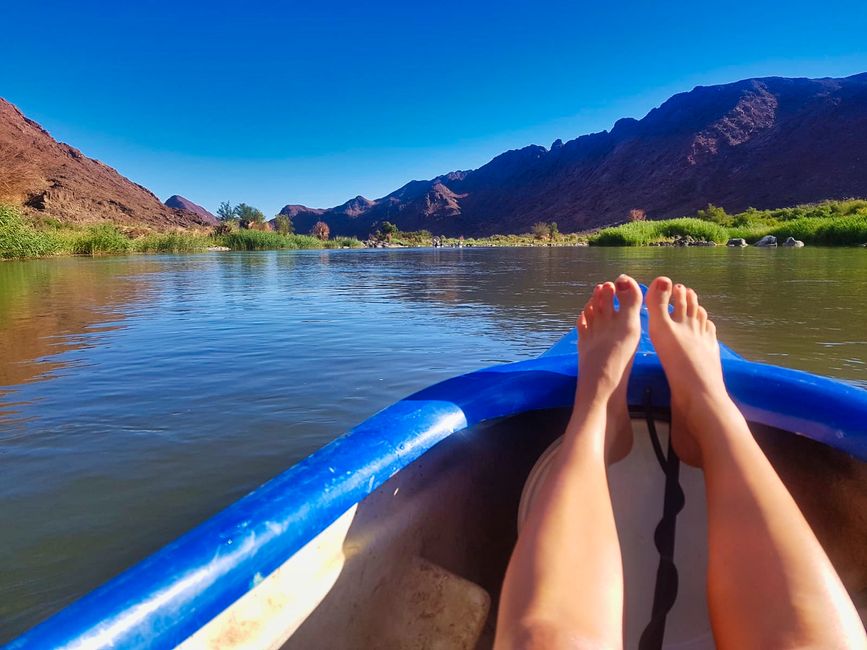
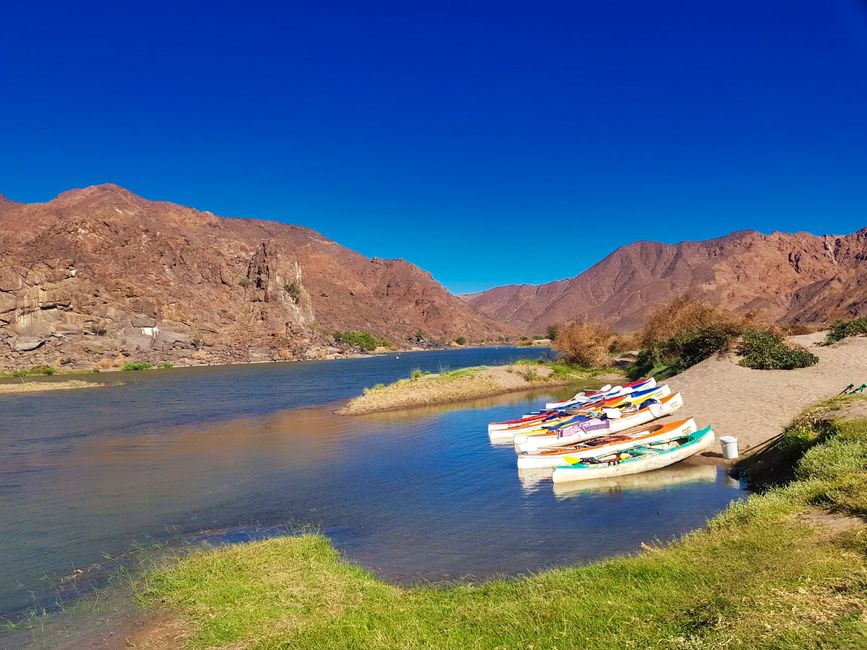
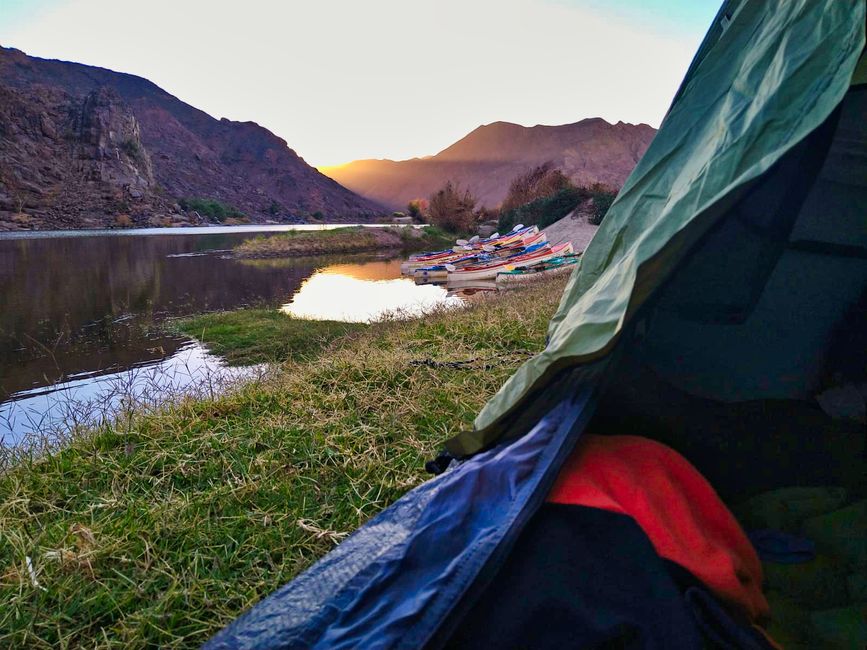
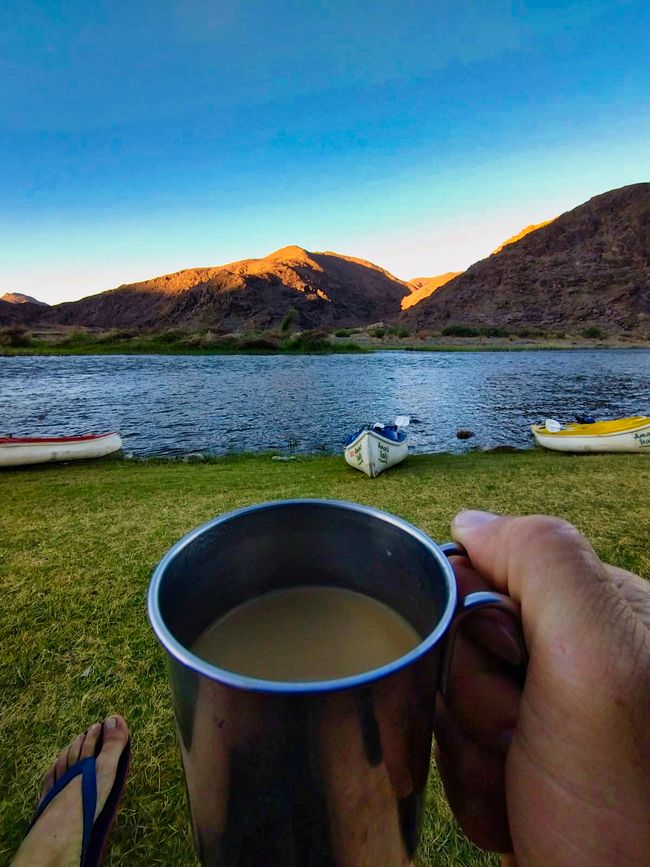
Aboneaza-te la Newsletter
Fish River Canyon
The Fish River, with 650 kilometers the longest river in Namibia, meanders through the Fish River Canyon in the deepest south of the country during rainy times. This gigantic gorge, partly up to 27 kilometers wide and 550 meters deep, was washed out over a length of 160 kilometers by the masses of water, until the Fish River Canyon, the second largest canyon in the world, was created. Of course, everyone knows the huge Grand Canyon in the USA, but we hadn't heard of the Fish River Canyon before our trips to Namibia. Since it is located in the far south, we did not manage to visit it on our last trip, so it was clear from the beginning: we want to go there!
The canyon is located in the cross-border Ai-Ais Richtersveld Transfrontier Park, which is about three-quarters in Namibia and one-quarter in South Africa. We find the most beautiful view of the canyon about ten kilometers from the entrance at a viewpoint with information boards about the formation of the canyon. The view down into the deep gorge is breathtaking. From left to right, as far as the eye can see, we look out over the canyon. Similar to a safari, one could enjoy the view of the landscape forever, so we spend several hours driving to the different viewpoints. Even if you think you have seen everything, the next time gives a completely different view that astonishes and takes your breath away.
The tough visitors can hike the Fish River Hiking Trail during the African winter months, about 85 kilometers along the Fish River through the canyon. What sounded interesting from a safe distance at home suddenly becomes unimaginable. Three to five days trudging through the sandy river bed in the scorching heat (up to 50°C!) with a heavy backpack and water for the entire time, without shade? Sleeping in a tent or in the sand at night, without the possibility of interrupting the trail, as there is only one descent into the canyon? Sharing the few water points with leopards? Maybe next time.At least the hikers who complete the trail are rewarded with hot springs in the Ai-Ais Talkessel. We lazily drive the distance by car, and once we arrive, we experience a complete change of landscapes. Thanks to the occasionally water-bearing Fish River, huge date palms bloom here, lush green reeds grow in the riverbed, and hordes of monkeys climb over the mountains. Unfortunately, the latter are not so friendly towards us. Since we are the only campers on the huge site of the state camp, the efforts of the baboons to get food are focused solely on us. Although we are really careful while cooking, we don't notice how the largest of the monkeys sneaks up behind our car. Unfortunately, that's it with our jar of peanut butter and my vegan cheese. He even takes the cucumber, covered in plastic wrap, directly into his mouth and takes a bite. It would be tragic if we weren't so caught off guard and shocked.
The Orange River, originating in Lesotho, forms the border between South Africa and Namibia for about 500 kilometers. There, it flows through the Ai-Ais Richtersveld Transfrontier Park into the Atlantic Ocean. Unlike most other rivers in the country, it actually always carries water, so the region appears much greener and more tropical compared to the desert landscapes of Namibia. Past vast vineyards, the path leads us directly to the river to the Amanzi Camp. There we have booked a canoe trip that will take us four days and 63 kilometers on the Orange River, far away from roads and villages, right through the national park.
Upon arriving at the camp, we get to know a few other travelers who are also participating in the canoe trip. From two older couples from South Africa to a Swiss family with children to two Namibian couples our age, everything is represented. The first small talks immediately show: we have a super nice and funny group. After our luggage (clothes, sleeping bags, sleeping mats, tent, water) is packed in large, waterproof buckets, the canoes are loaded. Plus, a cool box filled with beer and cider, then nothing can go wrong. Or as our guide says: "Please, no alcohol while paddling. But beer is okay!" With "Laguna Matata" - that's the name of our pretty, blue two-seater canoe - we paddle leisurely down the Orange River. The river has enough current that we can also just drift along and not exhaust ourselves too much. In between, there are some wild rapids. At these points, we form a single line with the eight other canoes and try to paddle exactly as the canoes in front of us do, just as planned. Except when they capsize, it's better not to. We don't seem so stupid because almost everyone has fallen into the water at some point during the trip, except us. To refresh ourselves, we always stop at the rapids and walk back to swim through them again without a boat. This so-called "Nappie Run" is done with a swim vest worn upside down, which looks like wearing a diaper. This way, you are better kept above water, but I think the main reason is that it simply looks funny. Anyway, all the South Africans in our group seem to know this already and have a blast. When it gets too hot in the sun while paddling, they also like to initiate water battles to cool off. The perfect refreshment in the scorching midday heat! Our tour takes us right through the national park, far away from roads or villages. In the evenings, we either stop on the Namibian or - illegally - on the South African side of the river and set up our tents. Since we are about 15 people and have three local guides with us, it feels very safe despite any wild animals or people. In the evening, we cook on the campfire, drink gin and tonic, and laugh and talk together. After a few days, we can already switch to speaking a few sentences in Afrikaans. As in Dutch, everything is "lekker". Delicious food, delicious water in the river, slept well, and so on.While some sleep only on mattresses in the grass, we simply leave the tarp of our tent away so that we sleep only in the inner mosquito net tent. It's pretty cold at night, but you literally sleep under the starry sky and can watch shooting stars directly from your bed - well, rather from the sleeping mat. When we are not paddling or taking breaks on small sandbanks, we hike up the surrounding mountains and enjoy the incredible view of the blue shimmering river, the surrounding green trees, and the barren reddish-brown rocks. So picturesque that it seems surreal again. We quickly become a close-knit group, strangers become friends, and plans for future meetings are made. After four weeks of camping road trips in twos, it's really nice to exchange ideas with other people, have company, and get to know each other. The perfect conclusion to our trip to Namibia!
Aboneaza-te la Newsletter
Răspuns
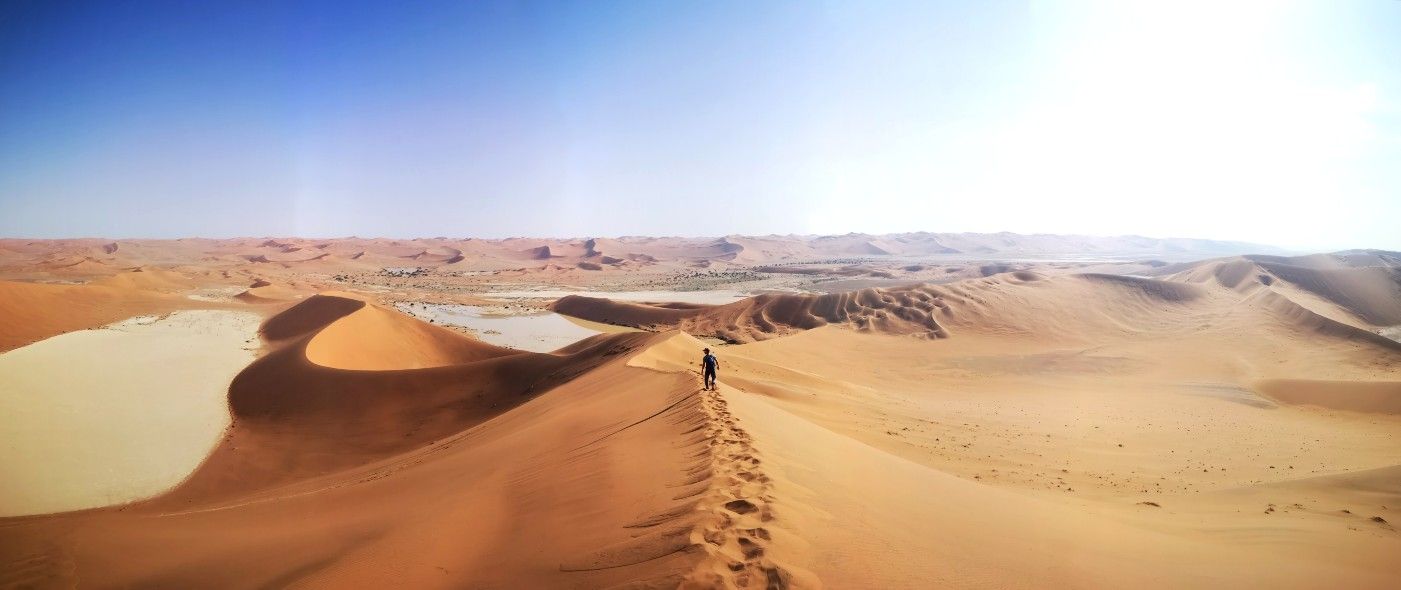
Rapoarte de călătorie Namibia
